This Day in Rock History - May 5th

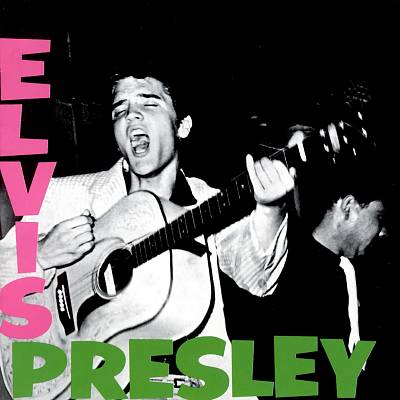
1956: The times they really are a’changin’. On this day, Elvis Presley becomes the first rock ‘n’ roll artist to put an album at #1 on the Billboard charts when his “Elvis” album hits the top.
This Day in Rock History - May 4th

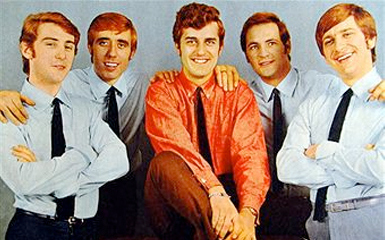
1964: In Birmingham, England, two young musicians named Ray Thomas and Mike Pinder decide to form an R&B group they call the Moody Blues (taking the name from Duke Ellington’s song “Mood Indigo”).
This Day in Rock History - May 2nd
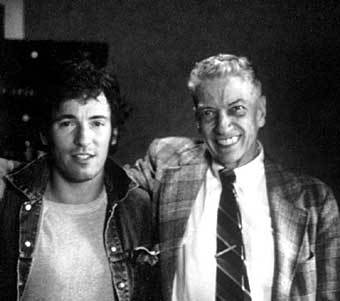 1972: John Hammond, the man responsible for signing Billie Holiday and Bob Dylan to the Columbia record label auditions a young Jersey boy named Bruce Springsteen. Hammond is so impressed , he immediately arranges for Bruce to appear at New York City’s Gaslight Club that night so Hammond can bring the label top brass to hear him as well.
1972: John Hammond, the man responsible for signing Billie Holiday and Bob Dylan to the Columbia record label auditions a young Jersey boy named Bruce Springsteen. Hammond is so impressed , he immediately arranges for Bruce to appear at New York City’s Gaslight Club that night so Hammond can bring the label top brass to hear him as well.
This Day in Rock History - May 3rd

What a day for birthdays!
1919: Pete Seeger
1928: James Brown
1937: Frankie Valli
1950: Mary Hopkin
1953: Bruce Hall (REO Speedwagon)
This Day in Rock History - May 1st
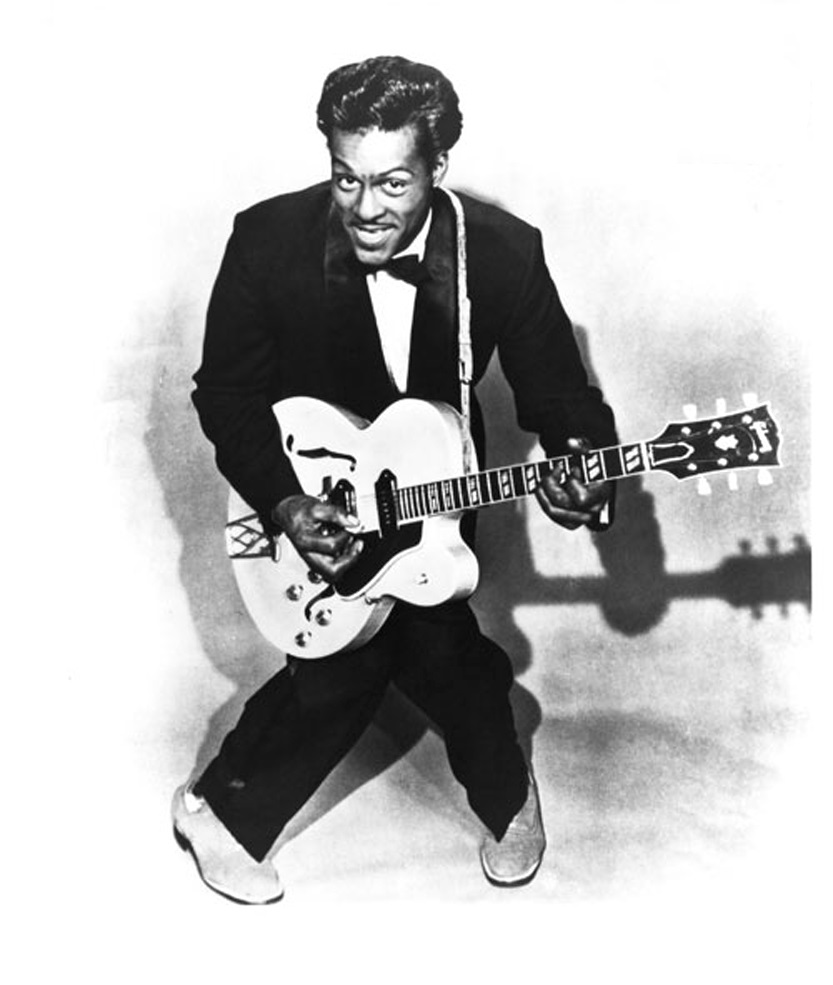
1955: Probably the most significant move in recording label history: Chess Records signs a new artist recommended to them by Muddy Waters. Chuck Berry will soon embark on a series of recordings that will define the music now known as rock ‘n’ roll.
This Day in Rock History - Apr. 30th
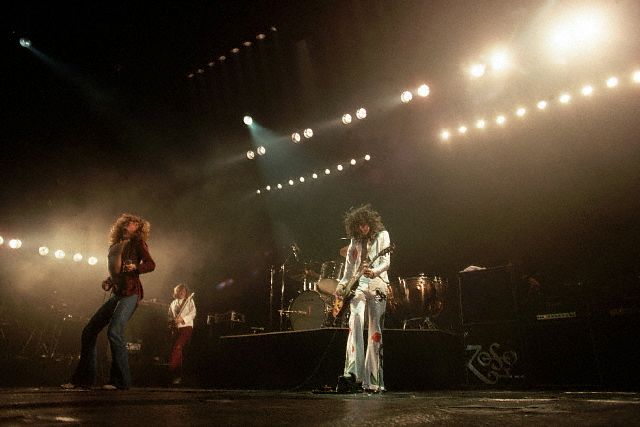 1977: Led Zeppelin play to the largest concert crowd for a single act to that date when 76,229 fans crowd in the Silverdome in Pontiac, Michigan.
1977: Led Zeppelin play to the largest concert crowd for a single act to that date when 76,229 fans crowd in the Silverdome in Pontiac, Michigan.
The previous record had been held by the Who, also at the Silverdome.
This Day in Rock History - Apr. 29th
 1976: Following his concert in Memphis, Bruce Springsteen takes a cab to the Graceland mansion, hoping to meet Elvis Presley.
1976: Following his concert in Memphis, Bruce Springsteen takes a cab to the Graceland mansion, hoping to meet Elvis Presley.
Turned away at the gate, Springsteen scales a wall and attempts to crash his way into meeting the King. It turns out Elvis is away from Memphis at the time and Bruce is escorted off the grounds by security without further incident.
Those Kids & Their Crazy Dances
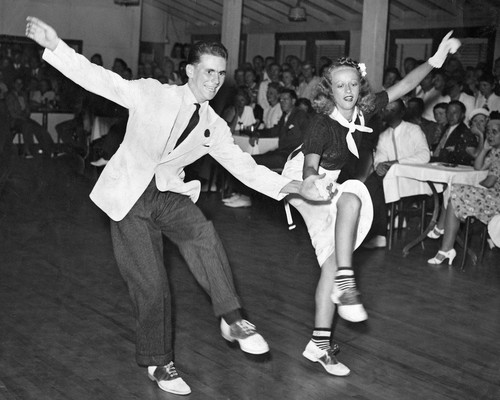 The Origin of the Jitterbug
The Origin of the Jitterbug
Like a great deal of American popular culture of the 20th Century, the jitterbug has its origins in black culture.
While the dance is quite frequently associated with the early days of rock ‘n’ roll, it actually got its start in the 1930’s. While the exact origins of the dance are lost to time, it’s believed to have evolved from the looser style of dancing that had begun in the Roaring 20’s.
The term “jitterbug” originally meant someone who had consumed too much alcohol. Gradually it came to mean someone who was a fan of swing music. Finally, it came to be associated with the style of dancing that was taking place at swing clubs.
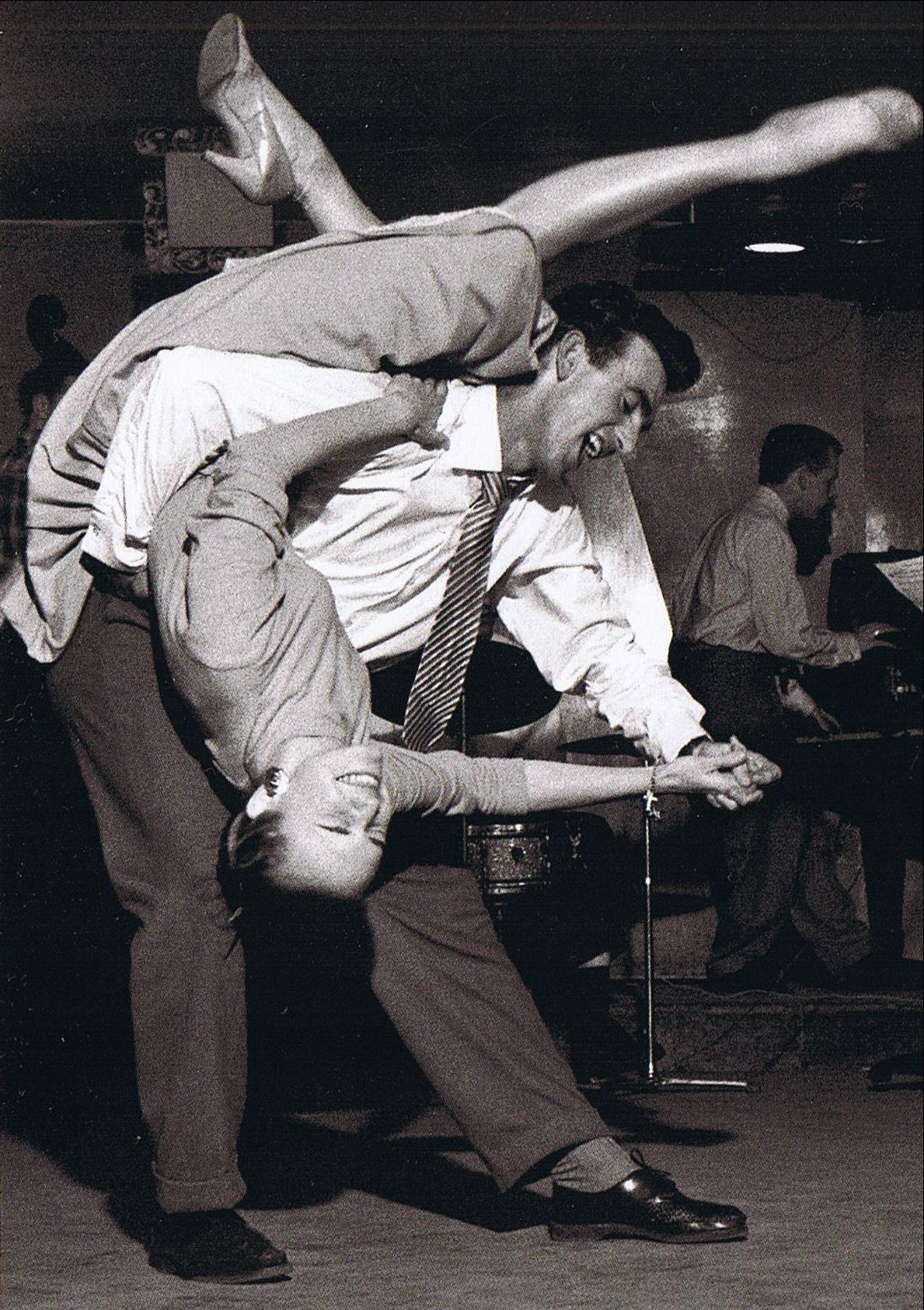 The earliest reference to it in song is from a 1934 - Cab Calloway's tune, “Call of the Jitterbug.” Some also know that a song called “The Jitterbug” was written for the 1939 classic film Wizard of Oz. The song was recorded and shot, but was cut from the final film (although you still hear the Wicked Witch mention “a little bug she’s sent” ahead of the Flying Monkeys to take the fight out of Dorothy and her companions.) The footage has been lost to time, but a recording of the song still exists.
The earliest reference to it in song is from a 1934 - Cab Calloway's tune, “Call of the Jitterbug.” Some also know that a song called “The Jitterbug” was written for the 1939 classic film Wizard of Oz. The song was recorded and shot, but was cut from the final film (although you still hear the Wicked Witch mention “a little bug she’s sent” ahead of the Flying Monkeys to take the fight out of Dorothy and her companions.) The footage has been lost to time, but a recording of the song still exists.
World War II help spread both American swing music and the jitterbug all over the globe.
It was still going strong when rock ‘n’ roll arrived on the scene in the mid-1950’s. It was easily adapted to the strong, fast beat of early rock hits and remained the teenager’s dance of choice until a little something called “The Twist” arrived on the scene in 1960.
But more about that later.
Television's Original Hipster
 How We Went Koo-Koo for "Kookie"
How We Went Koo-Koo for "Kookie"
Who could have known that a serial killer would become one of TV’s first teen idols?
In the late 1950’s, private eye shows were giving Westerns a real run for their money in prime time. Starting in the summer of 1957, Richard Diamond (created by Blake Edwards) made the jump from radio to television and did pretty well.
In the fall of 1958, two “imitation Diamonds” hit the air: Peter Gunn (also created by Edwards) and 77 Sunset Strip (created by Roy Huggins). Both were smash hits.
Huggins had intended his series to be hard-boiled, centering on former military intelligence officer Stu Bailey (Efrem Zimbalist, Jr.). However, viewer reaction to a serial killer in the pilot soon sent the series in a radically different direction.
A young unknown actor named Edd Byrnes had been cast as a hair-combing, jive-talking bad guy named Gerald Lloyd Kookson, III in that first episode. A serial killer, in fact. But his hipster manner was an instant hit with preview audiences. So the studio quickly created a regular part for the actor and opened the series’ second episode with a little monologue from Zimbalist to explain it:
“We previewed this show; and because Edd Byrnes was such a hit, we decided that Kookie and his comb had to be in our series. So this week, we'll just forget that in the pilot he went off to prison to be executed.”
That, as they say, was that. Instead of the gas chamber, Kookie wound up parking cars at the pizza joint next to 77 Sunset Strip – a little place called “Dino’s Lodge,” a real location in Southern California, owned by none other than Dean Martin, who happily allowed the studio to give his place a huge free plug every week.
Although the show was supposed to be about private eyes Stu Baily (Zimbalist) and Jeff Spencer (Roger Smith), Kookie’s appeal (especially to those of us under 20) quickly made him the show’s most popular character.
 Not only was Kookie the very personification of cool, but he also didn’t temper his demeanor or his hipster talk around anyone. You either dug him or you were left clueless, Dad. For most people our age, it gave us a glimpse of how we could be different, yet still be confident and successful.
Not only was Kookie the very personification of cool, but he also didn’t temper his demeanor or his hipster talk around anyone. You either dug him or you were left clueless, Dad. For most people our age, it gave us a glimpse of how we could be different, yet still be confident and successful.
At the show’s height, Brynes was receiving 15,000 pieces of fan mail a week, rivaling most rock stars. He staged a successful holdout in the show’s second season, demanding more money and a bigger part. The studio caved rather quickly and soon Kookie began helping Bailey & Spencer solve their cases, quite often getting involved in the series’ obligatory fight scenes.
To capitalize on the character’s popularity, Warner Brothers sent Byrnes into the recording studio with another of their budding teen idols, Connie Stevens, to record the deathless classic, “Kookie, Lend Me Your Comb.”
 The song – well, it’s hard to really call it a song. It consists mainly of Byrnes talking his usual hipster patter (“I’ve got smog in my noggin”) while Stevens tries to pry the ever-present comb from his hand. (“You’re the very utmost!”)
The song – well, it’s hard to really call it a song. It consists mainly of Byrnes talking his usual hipster patter (“I’ve got smog in my noggin”) while Stevens tries to pry the ever-present comb from his hand. (“You’re the very utmost!”)
It was the right piece of fluff in the right place at the right time as it went all the way to #4 on Billboard’s Hot 100 in 1959.
Ultimately, Kookie’s character matured. He joined the Sunset Strip firm as a full-time private investigator, but it did Byrnes no favors in the long run.
Because he was under contract to Warner, Byrnes had to turn down parts in Ocean’s 11, Rio Bravo, and The Longest Day. By the time he got out of his contract, he had been forever typecast and his film career never developed.
 Byrnes did make a brief comeback in 1978 when producers cannily cast him as disc jockey Vince Fontaine (“The Main Brain”) in the film version of Grease. He was one of several 1950’s icons who appeared in that film.
Byrnes did make a brief comeback in 1978 when producers cannily cast him as disc jockey Vince Fontaine (“The Main Brain”) in the film version of Grease. He was one of several 1950’s icons who appeared in that film.
77 Sunset Strip gave us a glimpse of many future TV stars (Mary Tyler Moore, Adam West, Tuesday Weld, Jim Backus and others. Plus, the show featured a very high caliber of writing, including authorized adaptations of Strangers on a Train and Dial M for Murder).
But shining above it all is the original “too-cool-for-school” persona of television’s first and still greatest hipster, Gerald Lloyd Kookson, III a.k.a. “Kookie.”
More than sixty years later, he’s still “the ginchiest!”
This Day in Rock History - Apr. 28th
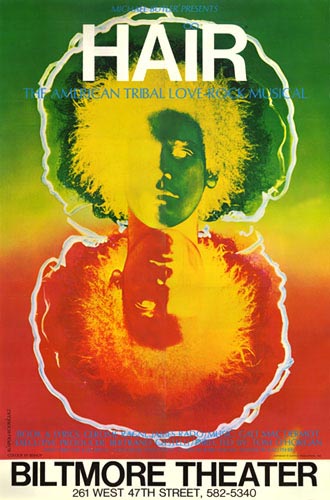 1968: The “hippie” musical, Hair opens on Broadway.
1968: The “hippie” musical, Hair opens on Broadway.
It will run 1,729 performances and create hits for the Cowsills (“Hair”), Three Dog Night (“Easy to Be Hard”), Oliver (“Good Morning Starshine”) and the 5th Dimension (“Let the Sunshine In”).
A young Diane Keaton is one of the cast members who take off their clothes during the play.
Pop Up Player
Latest Posts–Financial Info
-
Quick Ways to Score Extra Cash
Even in today’s economy, everybody is looking for ways to expand their income. We have three ways that might do the trick. Cash in Your Gift Cards – Have unused gift cards? You can sell…
-
Fast & Free Will
Did you know a will dosn't have to be a long, complicated process? And you defintely should have one! Dying without one can leave your estate in chaos. The internet comes to rescure again. You…
-
Making Home Renovations Pay
Fixing up your home? You might want to tell your insurance company about it. 8 of the 10 largest home insurers offer little-publicized discounts for certain renovations or upgrades. Go to BankRate.com and type in…
-
Why Use Credit Cards, Not Debit Cards
Because credit cards give you more protection should your card number be stolen. Most credit card companies have a limit on how much your account may be charged in the event of false charges. In…
-
Before You Rent a Self-Storage Unit
The rapid growth of self-storage facilities across the United States is a testimony to Americans having more stuff than they know what to do with. Before you rent a unit for your excess stuff,read this:…
-
Older Workers Wanted!
Ever been worried you might lose your job because you were getting too old? Relax. Many employers are now looking specifically at hiring and retaining workers over the age of 60. Why? Because of their…


